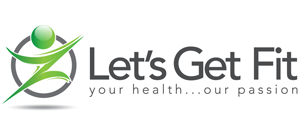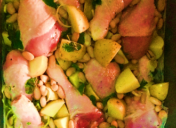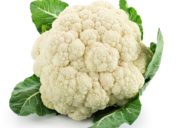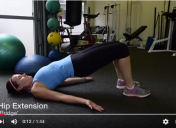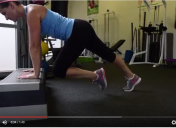Knee pain and exercise
Exercise combined with specific muscle strengthening around a damaged knee plays an effective role in treatment for types of arthritis, injury, mechanical, and other knee related problems. Strengthening the muscles around a damaged knee can help support that joint by taking over some of its responsibilities.
A knee injury can affect any of the ligaments, tendons or fluid-filled sacs (bursae) that surround your knee joint as well as the bones, cartilage and ligaments that form the joint itself. Some of the more common knee injuries include:
Torn meniscus: The meniscus is formed of tough, rubbery cartilage and acts as a shock absorber between your tibia (shinbone) and femur (thighbone). It can be torn if you suddenly twist your knee while bearing weight on it.
Patellar tendonitis: A condition characterized by tissue damage and inflammation to the patellar tendon causing pain in the front of the knee. Runners, skiers, cyclists, and those involved in jumping sports and activities are prone to develop inflammation in the patellar tendon.
Management of patellar tendonitis
R.I.C.E (Rest, ice, compression and elevation) is important to help reduce inflammation in the first 72 hours or when the when the injury flares-up. Rest from any activity that increases pain until symptom free. This allows the body to begin the healing process in the absence of further tissue damage to the patellar tendon. A gradual return to activity, including flexibility and quadriceps muscle strengthening is important for a successful recovery.
Some examples of mechanical problems that can cause knee pain include:
Loose body: Sometimes injury or degeneration of bone or cartilage can cause a piece of bone or cartilage to break off and float in the joint space. This may not create any problems unless the loose body interferes with knee joint movement, in which case the effect is something like a pencil caught in a door hinge.
Iliotibial band (ITB) syndrome: The iliotibial band is a long band of connective tissue than runs down the outer aspect of the thigh. ITB syndrome is characterized by pain at the outer (lateral) aspect of the knee where the iliotibial band crosses the knee joint. The ITB becomes so tight that it rubs against the outer portion of your femur (thigh bone).
Management of ITB syndrome
Ways to stretch and ‘release’ the ITB include: self-massage of the ITB using the foam roller, ITB stretching and quadriceps strengthening. A postural assessment to check knee alignment is also recommended.
Arthritis is one of the most common causes of knee pain. Two types of arthritis likely to affect the knee include:
Osteoarthritis: Sometimes called degenerative arthritis, osteoarthritis is the most common type of arthritis. It’s a wear-and-tear condition that occurs when the cartilage in your knee deteriorates with use and age.
Gout: This type of arthritis occurs when uric acid crystals build up in the joint. While gout most commonly affects the big toe, it can also occur in the knee.
Management of OA
Strengthening the muscles around your knee will make it more stable. Improving the muscle balance between the quadriceps (front of thigh muscles) and the hamstrings (back of thigh muscles) helps to reduce over-loading the knee joint. Exercises to improve your balance are also important.
